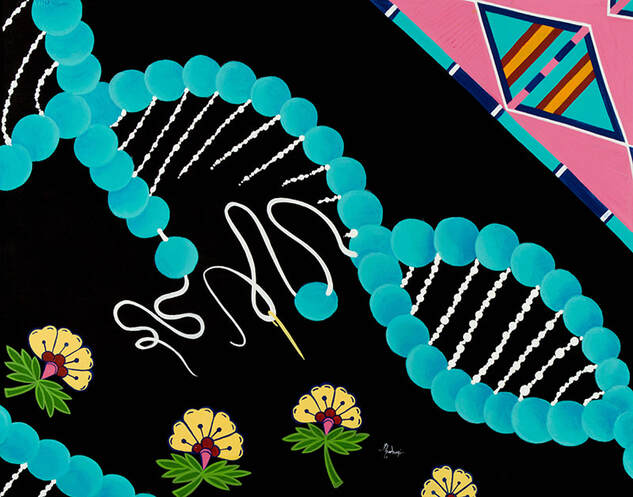Archived Protocols
Original Protocols
June 2021-October 2023
THE NUCLEAR TRUTH PROJECT
Rights, Respect, and Reciprocity
Protocols for Seeking Nuclear Truth with Integrity
We recognise protocols as being understandings of how individuals, organisations and communities stay in right relationship with each other, building respectful, reciprocal, and intentional relationships.
Protocols help us prepare ourselves and our spaces. They help centre the lived experience of those communities in the processes to redress harm.
These protocols aim to protect the vulnerable, shield from further trauma and harm, and ensure nuclear justice is centred in the work to redress both historic and any future harms from nuclear activities.
We advocate that those working towards nuclear truth and nuclear justice within, alongside or in relation to victims/survivors, First Nations and Indigenous Peoples and affected communities should undertake to consider and establish practices that follow these basic protocols:
RIGHTS
- Protect cultural continuity
- Ensure attribution and copyright of all knowledge shared
- Prove free, prior and informed consent for engagement, including the rights to refusal, withdrawal, and anonymity
- Practice respectful communications and consultations
- Take responsibility for your work with and alongside impacted communities, its impacts and follow through
- Work with an understanding of established Indigenous rights frameworks (for example as outlined in the United Nations Declaration on the Rights of Indigenous Peoples), and any local protocols and practices of the communities themselves
RESPECT
- Centre the lived experience of victims/survivors, First Nations/Indigenous Peoples and affected communities with respect
- Recognise that nuclear activities have inflicted considerable losses for many affected individuals and communities, including intergenerational traumas and harms
- Do nothing that foreseeably creates further harm or compounds existing harms
- Commit to deep listening practices
- Ensure principles of equity
- Work with spirit and integrity
- Be mindful of the need for translation or interpretation as well as for literacy requirements for affected community members
- Protect personal information and data and maintain confidentiality as requested by the individuals or community
- Develop clear and consensual protocols on the collection, use, reproduction, and dissemination of information as fits the communities and local laws
- Ensure intellectual and cultural property rights are addressed
- Take care to learn and follow relevant practices around use of imagery
- Publish or platform only with the explicit and written consent of the person/people concerned
- When approaching communities or individuals, demonstrate transparency in your motives, practices and outcomes
- From within communities, work to prepare ourselves and our spaces to be open and safe
- Recognise that for many communities, the connection between people, animals and all living creatures, and the lands, air, oceans and waters are inseparable from one another in responsibility and care
RECIPROCITY
- Build respectful, reciprocal (two way) and positive relationships, while avoiding extractive and colonial relationships
- Seek out any opportunities for revenue sharing, local consultations, and donations
- Recognise that information and data (including stories, research, other) collected from individuals and communities involves knowledge transfer and production, and as such is a resource that has impacts for the communities
- Work to ensure all data is collected with the safeguards described above and ensure that the material is transferred to the community members or representative organisations as well as the individuals who provided the stories and research materials
- Work with a collaborative intent
- Recognise that researchers and others are accountable to those communities they are working alongside, for, or with
- Build capacity wherever possible, providing any opportunities for local work, study, assistance and skill building
These protocols are a living document, open to adoption or adaptation by communities,
individuals, or organisations.
The Nuclear Truth Project Protocols were in active consultation with Indigenous Peoples, affected community members and allies from 2022 until October 2023 when they were updated to the current version on the website.
This original version is archived here for community reference.
The Working Paper on the original Protocols that was submitted to the UN First Meeting of States Parties to the Treaty on the Prohibition of Nuclear Weapons in June 2022 can be found here.
Please feel free to share the link to our current Protocols with your organization or networks, and to consider a formal sign-on to adapt or adopt the Protocols as a tool in your work. For further information please contact us.


DNA Repair. 2017. 16 x 20 in. Acrylic on Watercolor Paper. Mallery Quetawki (Zuni Pueblo). artist site | instagram
DNA has the ability to repair itself through complex mechanisms and pathways when damage occurs. Its intricacy of repair can be compared to the creation of beaded items in Native Culture. Designs are thought out ahead and require skill and patience to be able to bead such intricate pieces. When a beaded necklace comes undone, the stones/beads are restrung by using what is already there. The design used is from the Crow Nation. The use of the flower design symbolizes the idea of regrowth.
We would like to acknowledge the use of Ms. Quetawki’s images from the National Institute of Environmental Health Sciences, the U.S. Environmental Protection Agency, University of New Mexico Health Sciences Center, the University of New Mexico NCI-designated Comprehensive Cancer Center and the University of New Mexico College of Pharmacy.
We are grateful to Zuni Pueblo artist Mallery Quetawki for designing the beautiful Nuclear Truth Project logo. Combining many symbols familiar within the nuclear free movement, this stunning design evokes both the strength and the long story of the movement we are a living part of. As the artist explains;
“The olive branch is the offering for peace, the arrows are signifying the work towards a common cause and the peace symbol represents the outcome. The handprint represents unity and the sunflower represents remediation. The DNA strand represents the positive outcome for all living things.”
